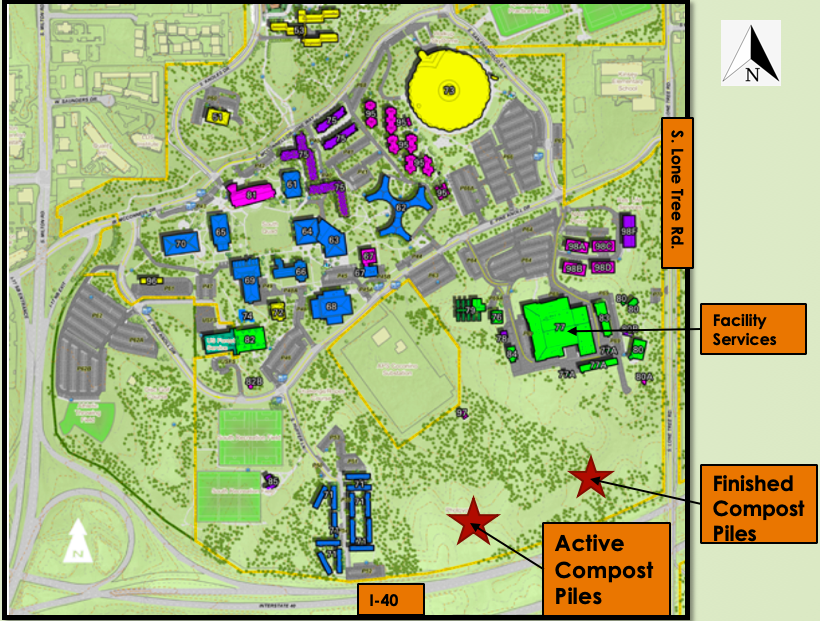Project inforamtion
Sampling
Sampling was performed according to the Work Plan. Three of the twelve finished compost piles were sampled. The piles were sampled at four feet height with an auger. Compost was taken from eight locations within the pile and composited to create one sample.
The samples were collected on September 20, 2019 at 10:30 AM with sunny and windy weather conditions. Images of the log notebook, chain of custody, and field work are found in Appendix B: Sampling Event Information (Refered to the final report).
Background Information
NAU’s composting program was created on April 30, 2012 [1]. Shortly after the composting program’s creation, a composting study that spanned a year and a half, 2011-2012, was conducted by former forestry student in coordination with NAU, to develop the most effective means of composting on a large scale in Flagstaff [1]. According to an email exchange mentioned in the report from the City of Flagstaff Community Sustainability Specialist, McKenzie Jones, the amount of organic material deposited into Flagstaffs Cinder Lake Landfill made up ~28% of the City’s waste stream [1]. The organic material being disposed into the landfill that could be turned into compost was estimated to be ~60,000 tons per year [1]. To combat the constant increase of waste produced per year, NAU created a compost recycling program that is intended to reduce the amount of total waste put into Flagstaff’s Cinder Lake landfill. As a result of this program, NAU processed 10,000 lbs. of composted material per week during the 18-month study period. At the production rate of 10,000 lbs. per week NAU is projected to produce a maximum of 520,000 lbs. per year or 260 tons of composted soil from the initial composting pilot study [1].
